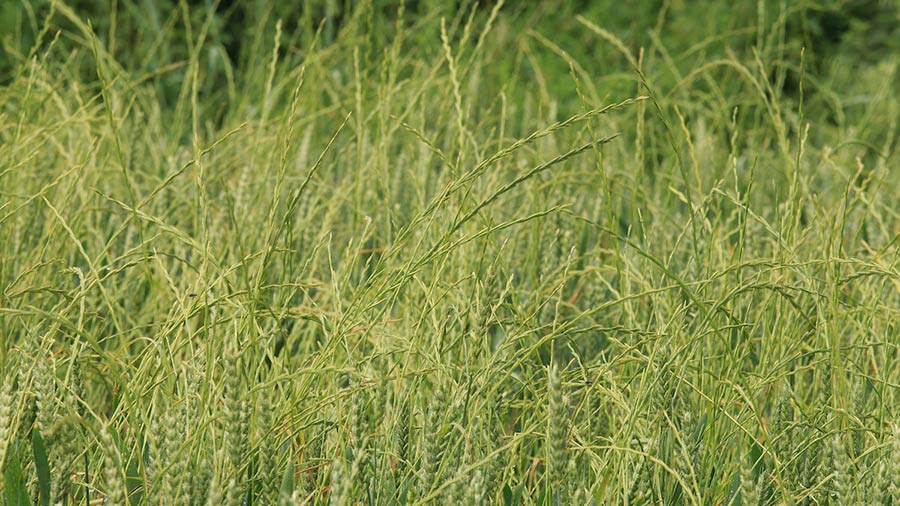Herbicide mix shows good ryegrass control in right conditions
 © Tim Scrivener
© Tim Scrivener Good control of ryegrass in winter wheat can be achieved using a new herbicide alongside others with different modes of action, cultural controls and timing sprays when there is adequate soil moisture.
Ryegrass control has become more difficult since the first herbicide-resistant strains of Italian ryegrass were detected in 1990.
In addition, a diminishing number of effective herbicides and a dry 2022 autumn have affected control.
See also: Farm trial reveals best blackgrass strategy with new herbicide
Rob Adamson, technical development manager with agronomy group ProCam, says the launch last year of herbicide cinmethylin (Luxinum Plus) is giving good control of ryegrass and is reducing the reliance on flufenacet.
“Our trials clearly showed that cinmethylin is inherently the strongest molecule on ryegrass,” he says.
Two of his group’s trials purposely targeted challenging ryegrass populations in Essex and South Yorkshire.
Poor efficacy
Historically, flufenacet has been the core component of ryegrass herbicide programmes.
With increasing signs of poor efficacy, a diversity of other molecules used in mixtures (stacks) or sequences is seen as essential to control high populations of ryegrass with tough resistance profiles.
However, this is dependent on good soil moisture to enable cinmethylin to work, and because ryegrass germinates continuously, one application of one active will not provide season-long protection.
Therefore, growers should consider a sequence of treatments, utilising both this new molecule alongside a range of other modes of action.
An over-reliance on cinmethylin will expose it to the risk of resistance developing.
The group’s trials in 2022 showed that when conditions are dry at drilling, the most effective herbicide should be preserved until soil moisture is present.
Good persistence
He suggests that a pre-emergence treatment with actives that have good levels of persistence, such as diflufenican and alconifen (Proclus), should be deployed, with cinmethylin available for when soil moisture levels improve.
At post-emergence, when moisture levels did improve, the trials indicated that cinmethylin, together with a mix of pendimethalin and picolinafen (Parade), gave good levels of control as a follow-up to flufenacet, diflufenican (Liberator) and Proclus.
Alternatively, where cinmethylin had been deployed first, the three-way combination of chlorotoluron, diflufenican and pendimethalin (Tower) also provided a robust follow-up.
In both instances, the programmes benefited from the deployment of five or six actives.
Tri-allate (Avadex) was also shown to have a good benefit at the pre-emergence timing, taking the total number of active ingredients available to seven.
“Even in high-pressure scenarios, deploying a stacked and sequenced programme of cinmethylin used alongside a diverse range of other modes of action enabled the two trials to achieve 94% and 99% control of ryegrass populations,” says Rob.
Drilling conditions
A lot depends on the weather at drilling because if the season starts off dry the strongest active should be preserved, but if soil conditions are moist from the outset, like this autumn, then the strongest option should be used first.
In addition to herbicides, preventing ryegrass weeds that do successfully establish from tillering is also essential.
This comes down to ensuring the current crop is as competitive as possible, with seed-bed preparation, crop nutrition and drilling date all key.
The protracted germination of ryegrass means that, unlike in a blackgrass situation, delayed drilling is not as useful.
Although this tactic will still give an opportunity for a stale seed-bed to be established, it can be counter-productive if the crop is drilled too late.
This would allow competitive ryegrass plants to overpower the weaker and thinner wheat seedlings.

